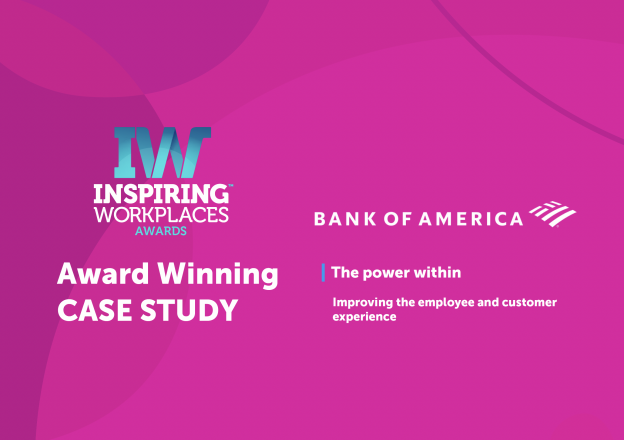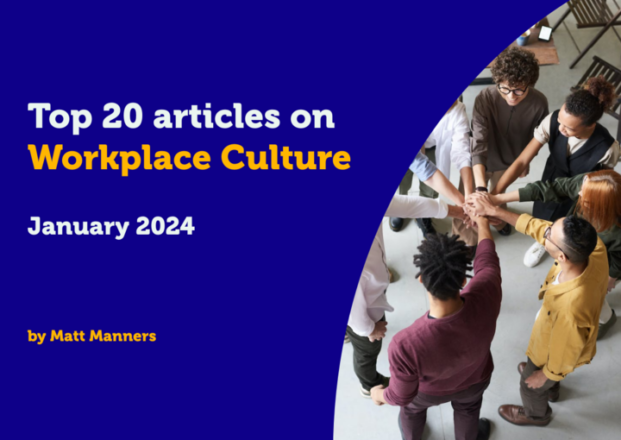
21st March 2023
Guest Post: How to create an impactful global benefits brand

How to create an impactful global benefits brand
Author: Adam Mason, Executive Vice President, Global, Benefex
With so many things competing for employees’ attention, it’s never been more important that employer communications are easy to understand, engaging, and effective. Get it right, and your employees will feel a real sense of belonging, even if they are in a small satellite office thousands of miles away from headquarters. Get it wrong, and you could risk disengaging pockets of your population and getting very little return on your employee benefits scheme.
What does a global benefits brand help you to achieve?
A global benefits brand (also known as an employer or internal brand) is the unique look and feel you give to your internal communications – whereas your external brand is customer facing, your global benefits brand is designed with employees in mind. Often your benefits brand will be an extension of your external brand and it should reflect your organisation’s identity and values.
When done right, your global benefits brand can help you:
- Make a real, authentic connection with your people – supporting a strong organisational culture
- Talk to everyone equally and align your values and messaging across your whole workforce
- Achieve a truly consistent experience for employees across the globe, as well as enabling cultural and country nuances to be catered for
- Differentiate your EVP – and support your recruitment and retention efforts
- Cut through the noise of the everyday communications that swamp employees’ inboxes
Importantly, a strong global benefits brand ensures your benefits scheme gets the attention it deserves and boosts benefits engagement and take up.
Global benefits administration
Across the HR community, we typically see three levels of administration which need to be catered for. In many enterprise organisations, we’ve found that employee benefits are generally supported and managed in each territory. At the other end of the scale, you may have your entire global function being administered from a single, central ‘headquarters’ with very little input or support from a local perspective. Or you have those in between who perhaps have an HR ‘headquarters’ but with regional hubs that take care of two or three countries each. In any of these scenarios, a centralised (but localised – more on this shortly) brand can help you achieve your benefits objectives in all territories.
In our experience, the best way to achieve consistency is to create a global benefits ‘toolkit’ that defines the core messages and helps countries stay on-brand and on-message.
A ‘toolkit’ is essentially a collection of framework assets that any country can draw upon. This can range from a suite of email templates and digital screens through to merchandise, postcards and videos – and while it’s likely some territories may only need a handful of these assets, they can select from the full toolkit which formats will work best in that region. A toolkit will help you guide the teams managing the brand in all regions, and still give them freedom of choice but without a completely blank page as a starting point!
How can I create a meaningful global benefits brand?
We have a few tips and pointers, but ultimately, we have four key areas for focus when designing and implementing a global reward brand:
- Invest the time and energy – commitment to consistency across different channels is key if you want it to succeed!
- Consider images and primary colours; remember they may mean different things in different cultures countries.
- Tone and language should be considered at the start of the process to ensure it’s meaningful for all employees.
- Engage with and excite your employees – make them feel part of it. They’re the ones who are living and breathing the culture your brand is encouraging.
If you don’t have the expertise in house to develop a global benefits brand, our team of communications experts can support you through this process – from start to finish. Take a look at our Snowflake success story to see how the Benefex communications team worked with Snowflake to create a distinctive global benefits brand that reflects their identity and supports their global benefits goals.
Different media and channels
In various countries (e.g. in the US) employees will be used to (and expect) more printed collateral and tangible brochures etc. arriving through their letterboxes or at the office. By contrast, many countries in Asia are more focused on digital. When building your brand, it’s important to make sure that all elements (e.g. fonts, graphics etc.) can work well both in digital and printed formats.
When building your global communications toolkit, make sure you’ve set out clear usage guidelines, so that the different owners across your territories have clear direction – especially in those countries where the team managing communications have a smaller function and perhaps aren’t as brand or design aware. Having these guidelines in place ensures that, wherever your employees are, your global brand is instantly recognisable.
Tone and language in translations
A common trap that companies fall into when developing a global brand is using a tagline or messaging that needs to be widely appealing but doesn’t correspond across multiple territories. For example, Pampers weren’t getting a lot of traction in Japan, and after some research they found that the folklore that’s common in the Western world of a stork delivering a baby (which was on their packaging) was unknown in Japan, where babies are known to be delivered by giant floating peaches. By contrast, McDonalds used variations on their “I’m lovin’ it” slogan so that it resonated better in various regions than the direct translation; so the French version translates to “That’s what I like” and Chinese is “I just like it”. Researching the various linguistic nuances can help you determine whether you can go for a straight translation (translating directly word-for-word) or a transcreation (adapting the messaging to fit locally while keeping the sentiment).
When it comes to building reward brands, language is typically a major conversation point at the start of the process for us, as it’s the foundation of delivering a real connection between the employees and their benefits.
Even if an employee’s second language is fluent, there is an undeniably strong link between in-language content and a consumer’s likelihood of making a purchase. According to Gallop, 9-out-of-10 internet users said that, when given the choice, they always visited a website in their own language. 42% of consumers say they will never purchase products in their non-native language.
This must be an even smaller number in the world of employee rewards where the complexity of certain benefits – particularly insurances – would make employees feel vulnerable and uncomfortable when making selections in a second language. One solution that we’ve seen has worked well has been to have a simple ‘toggle’ switch on online and digital content like brochures, which allows employees to view the same branded brochure but in a different language.
Images and colours
In order to maintain that essential consistency, you’ll need to include an image bank within that toolkit previously mentioned, but with variations to allow personalisation across different regions. So, you could have a bank of region-specific images for every territory that still fit the aesthetic of your brand. People-focused photography resonates well and makes your offering feel personal, but these images must be as diverse as your whole employee base.
There are also key considerations to make when choosing your primary and secondary colour palettes. It’s common for colours to denote differing meanings in different cultures. For example, it’s quite widely known that red is considered a ‘lucky’ colour in China, but that in a lot of other regions, it denotes danger. Purple is often associated with royalty in European countries, but in North America it frequently signifies mourning. Blue, however, is considered the most neutral colour and the most positive across multiple countries. A further consideration is colour combinations, as these cannot always be differentiated by those with colour blindness (e.g. red and green often look the same or similar).
When it comes to channels, tone and images, some organisations like to be more flexible and allow regional teams to have their own ideas and input, but there is always the concern that the brand might be diluted. So, your brand guidelines should outline clear values that all regions’ communications need to align to. In those areas where you want to allow more flexibility; you could provide guidance for images, rather than a bank of approved images. Or your toolkit could set a standard colour wash to use over images so that the underlying image is chosen locally but is overlaid with a recognisable brand element.
Getting employees involved
Nothing will hit home better with your employees than a brand that they’ve helped to create. We’ve found that giving your employees a say and getting their ideas – through workshops etc. – from the start is paramount in terms of understanding what’s important to them and the values they want to see. You’ll learn what designs they like and what will resonate with them, so that you are really living and breathing their values and reflecting it in your brand. One way we do this is to create mood boards based on employee input as a basis for your look and feel, which can be distilled and refined by our copywriters and designers into your final reward brand.
Then, once you’re ready to launch it’s important to bring this full circle and get your employees involved again. Launch with excitement, showing your people how their insights have really come to life. And be sure you keep communication regular, so they see the brand frequently and it becomes part of their daily world.
Your brand breathes life into your benefits
Your global benefits brand is a fundamental part of the employee experience, and as well as driving benefits engagement, can be used to tie several of your initiatives together to achieve consistency and familiarity across your whole people function. For example, several employers have used their reward branding to bring their wellbeing pillars to life, and in turn tied their benefits to various aspects of wellbeing within their benefits communications.
We’ve learned a lot working in collaboration with some of the largest global businesses and shared our learnings in our new guide to global benefits communications. Download now to find out how to reach your employees with the right message, at the right time – through the right channels.
This post was originally published by Benefex.





